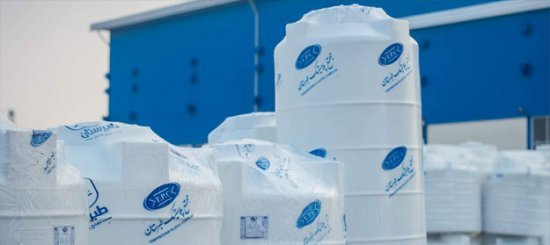Polyethylene water tanks are divided into different types based on the number of layers used in the body. Single-layer tanks, three-layer tanks, and four-layer tanks are different types of polyethylene tanks, which are used depending on the conditions, situation, and application of each of them.
Polyethylene water tanks are divided into different types based on the number of layers used in the body. Single-layer tanks, three-layer tanks, and four-layer tanks are different types of polyethylene tanks, which are used depending on the conditions, situation, and application of each of them. Many people look for information about tanks, their uses, advantages, disadvantages, and differences due to the variety of polyethylene tanks. One of the most common questions about the tanks is the difference between different types of tanks. We want to describe the differences between two types of polyethylene tanks, i.e. single-layer and three-layer water tanks in this article.
.jpg)
Difference between Single-Layer and Three-Layer Water Tank
Polyethylene tanks, as their name suggests, are produced from polyethylene, which is a type of polymer. Water tankers are different from each other in some cases such as design, color, dimensions, and volume, application, and number of layers. The differences between single-layer and three-layer tanks are:
- Number of Layers
The main difference between a single-layer and three-layer water tank is the presence of a black layer. The three-layer tank has a black layer, which has the task of preventing light from entering the tank. Unlike the three-layer tank, the single-layer water tank does not have this feature. Preventing the light entry is a very important feature because light is the main cause of algae growth in the tanks.
- Contents inside the Tank
The application of polyethylene tanks is different according to the specifications and number of layers of polyethylene water tanks. For example, a tank is suitable to store the drinking water in which the algae do not grow and prevents the color and taste of water from changing. The difference between a single-layer tank and a three-layer tank in this section is that the three-layer one is a more suitable tank to store the drinking water in a bright environment.
Polyethylene tanks have different types based on the number of layers constituting the body. Single-layer, three-layer, and four-layer tanks are examples of these tanks that are widely used. Many people look for the information to understand the difference between single-layer and three-layer tanks according to these conditions. The difference between a single-layer and three-layer water tank can be checked in some cases, which include:
Number of layers;
Tank contents;
Price;
Place of use
- Price
Another feature that distinguishes the three-layer and single-layer water tank is the tank price. If we compare a single-layer tank and a three-layer one with the same dimensions and volumes, we will notice the higher price of the three-layer tank.
Place of Use
The place of installation and use of polyethylene tanks is different according to the contents inside the tank. For example, as we mentioned earlier, a tank, which is anti-UV and prevents light from entering the tank, should be used to store water in an environment that is exposed to the direct sunlight.
Is the Thickness of a Three-Layer Water Tank different from a Single-Layer One?
Contrary to the misconception that has been formed in this regard; we should mention that there is no difference between the three-layer and single-layer tank in terms of thickness, and all the polyethylene tanks are similar to each other from this perspective.
Is a Three-Layer Water Tank better than a Single-Layer One?
To answer this question, we must mention that all the polyethylene tanks, including single-layer, three-layer, and four-layer, have their own features and each of them is produced for a specific use. it is better for valued consumers to consult experts and experienced people in this field in order to purchase a tank that suits their needs. If you want to know more about polyethylene tanks, study the materials on "What are the Advantages and Disadvantages of Polyethylene Water Tanks?

Conclusion
As mentioned, the difference between a single-layer and three-layer water tank is the presence of a black layer. This layer is responsible for preventing the light from entering the tank. Three-layer tanks have this feature, but the single-layer tanks do not have this feature. Consequently, some differences appear in the points such as the appropriate place of use, the liquid you want to store as well as the price of these two tanks.
Tabarestan Plastic Complex, the top producer of polyethylene tanks
As the largest and best producer of polyethylene tanks in Iran and the Middle East, Tabarestan Plastic Complex has 210 agencies nationwide. The complex has been able to capture a significant share of the market of polyethylene tanks by producing various types of polyethylene tanks, including single-layer, three-layer, and four-layer in different models and volumes with the highest quality. You can refer to the Details of Cubic Tank page to get more information about the products and the price, for example the price of the cubic tank.


 فارسی
فارسی English
English عربي
عربي کوردی
کوردی
User comments